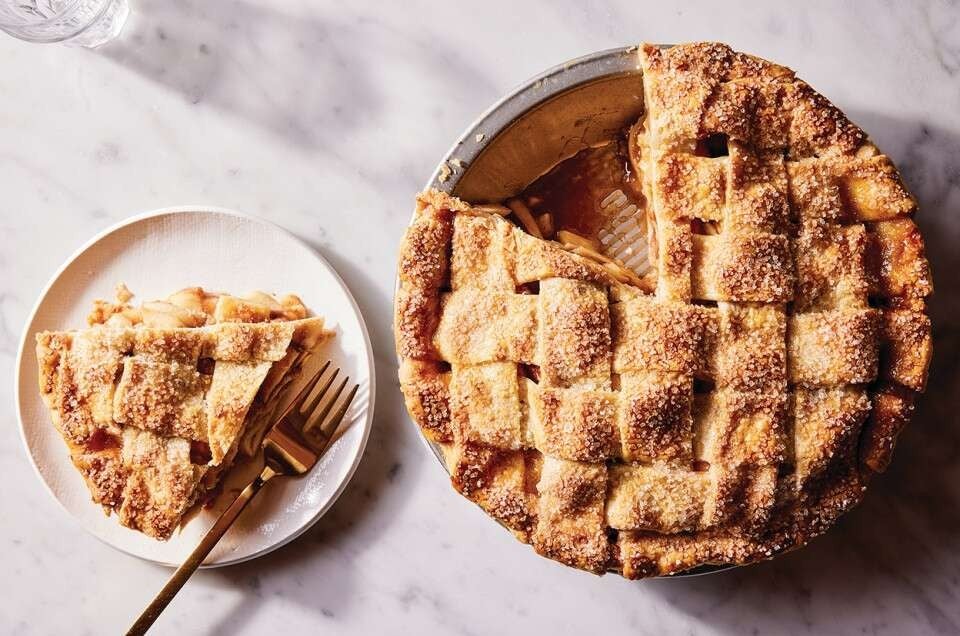


Runny apple pie. It's the bane of even some of the best bakers. You've probably experienced that apple pie angst yourself. You know, the moment when you hold your breath as you cut the first slice of pie and carefully lift it out to reveal … either perfectly thickened filling or apples swimming in a sea of liquid. The former generates a sigh of relief; the latter, slumped shoulders and resigned disappointment. But you can prevent runny apple pie — just follow our advice.
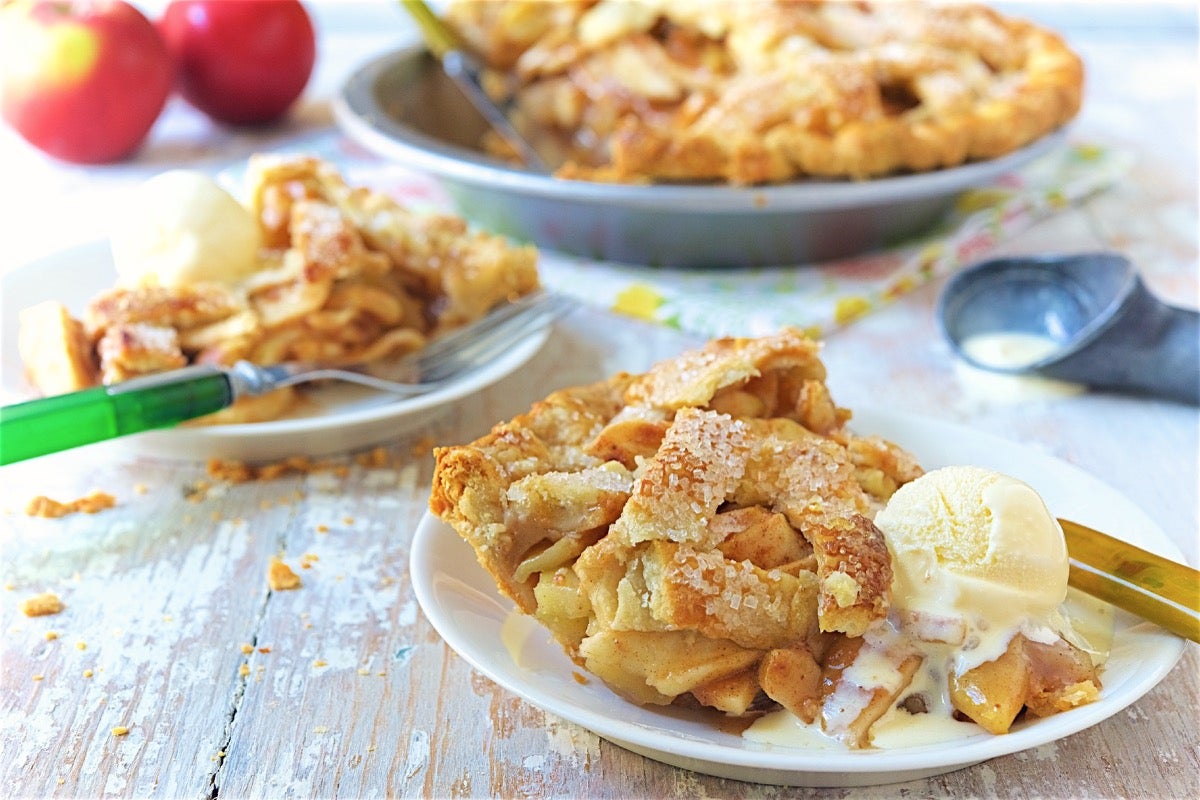
You may already have an apple pie recipe you love, one that yields perfect results every time. If so — go ahead and read this post if you like, but we're not about to try to get you to abandon it!
But if you're looking for a new go-to apple pie recipe, try our classic Apple Pie. It's made with your choice of cornstarch or Instant ClearJel in the filling; these starches soak up the excess juice created by the apples, which prevents it from pooling at the bottom of the pie and absorbing into the bottom crust. Without a lot of liquid to make it soggy, the crust can crisp up during baking and become brown and flaky, instead of wan and flabby.
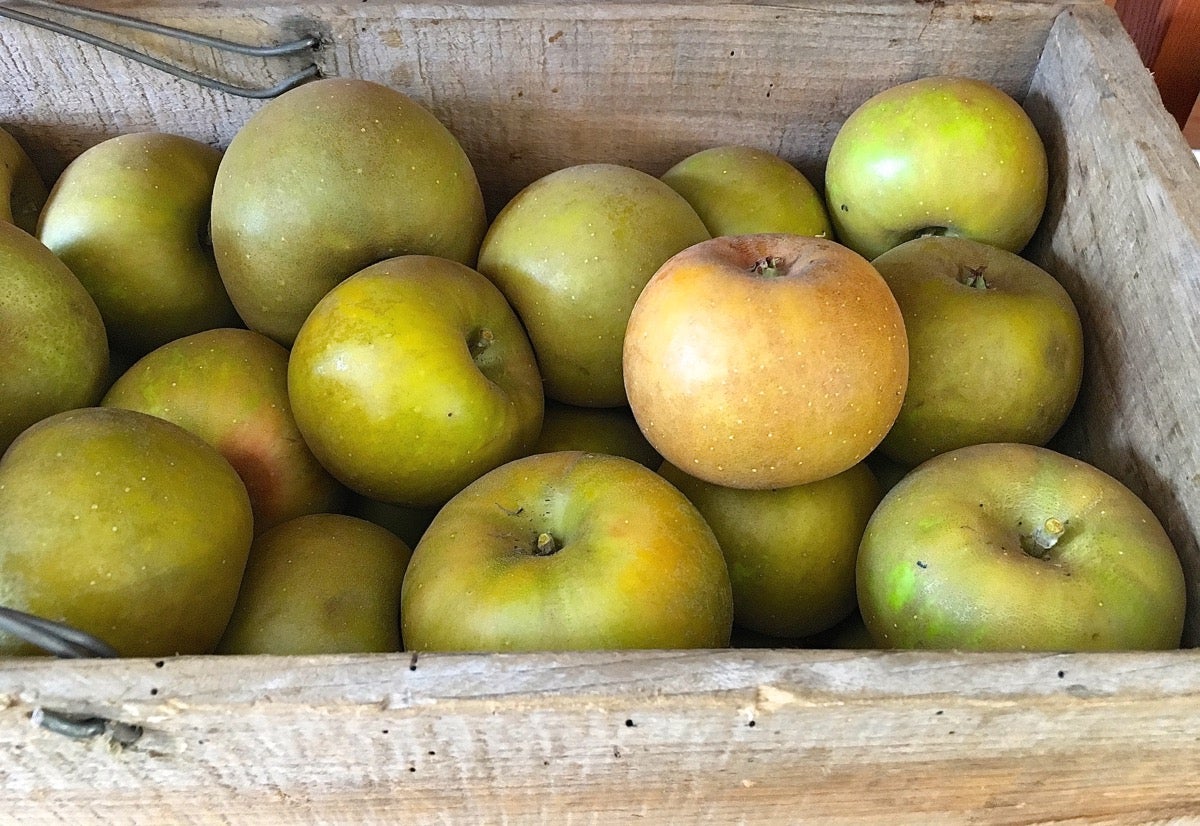
Your favorite recipe may not call for a specific apple variety, but you've probably discovered your own favorites. Some apples bake up firm, others soft. You'll find some apples are tart and tangy, others mild and sweet. Some bakers use a single variety in their pie; others mix and match different types.
Thankfully, apple pie filling readily lends itself to thickening success — no matter which type of apple you choose.
Apples are naturally high in pectin, the intercellular “glue” that helps them keep their shape and retain their juices when baked. So you're less likely to bake a runny apple pie than, say, a runny rhubarb pie.
Still, if you find yourself consistently producing pies that are juicier than you like, consider this: the more tart the apple, the stronger its pectin. So a tart apple like Granny Smith will naturally offer more structure to pie filling than a sweeter McIntosh or Delicious.
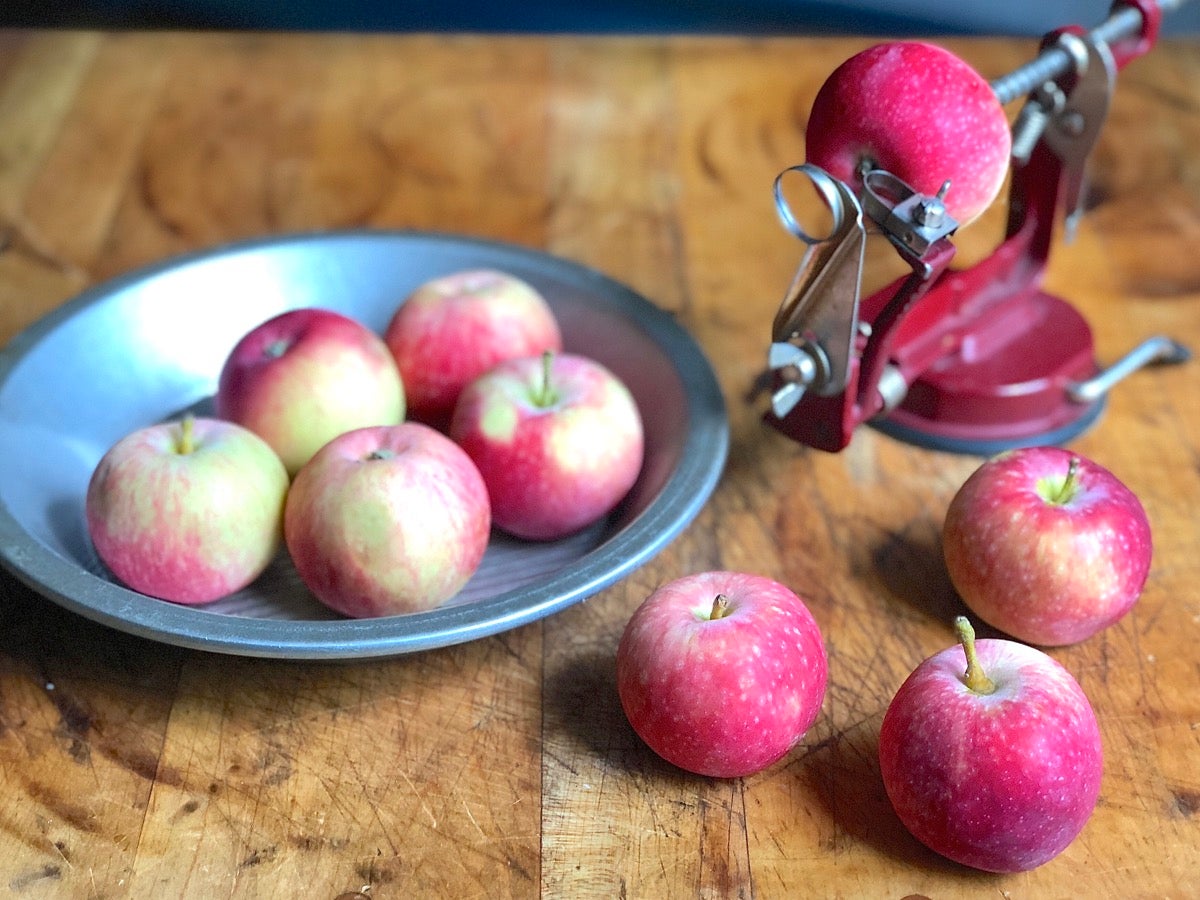
Veteran apple pie bakers have long since chosen their favorite apples. But for those of you who haven’t, read our blog post, The very best pie apples. Spoiler alert: I like a combination of specialty-type apples, but Granny Smiths are a fine choice, and available year-round.
What if the filling in your current favorite apple pie recipe is juicier than you like? Or despite the reliable success of your veteran recipe, you want to try something different? Here are some tips to prevent runny apple pie.
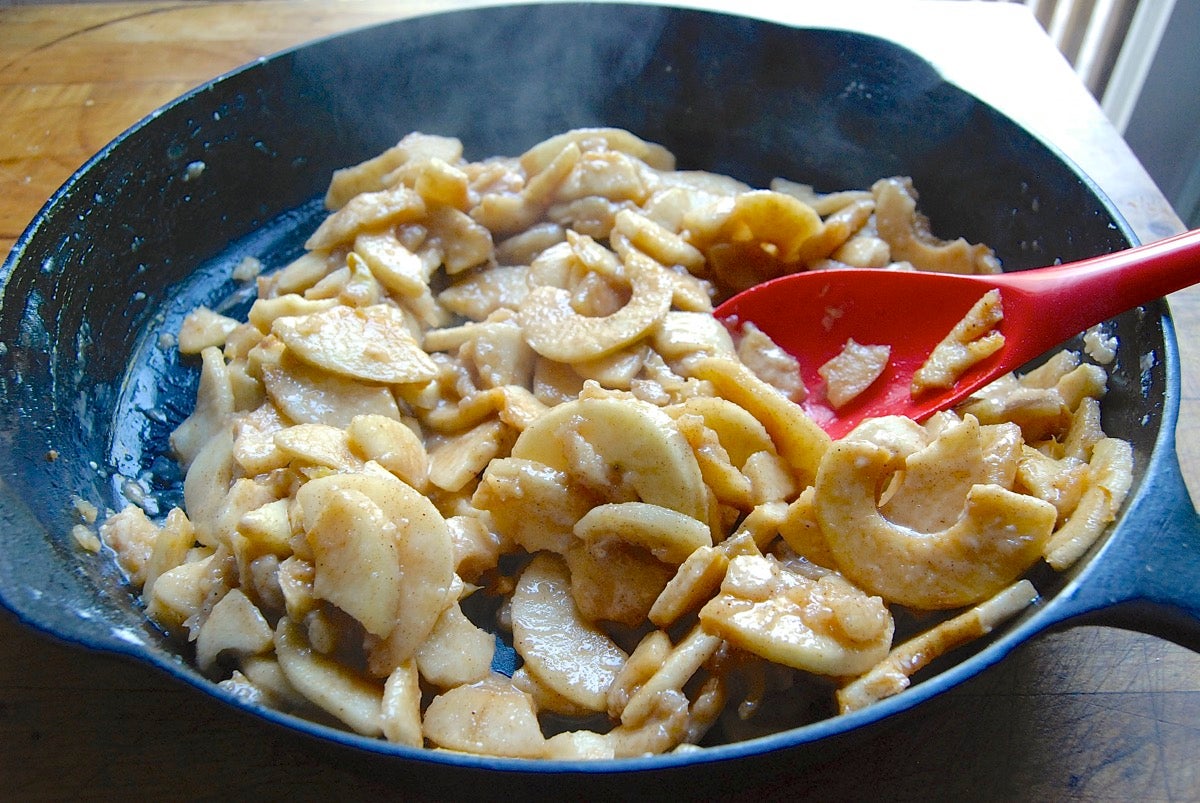
I’m not advising you to cook your apples until they’re perfectly tender before spooning them into the crust; after all, they’ll continue to bake in the oven.
But by cooking apples, sugar, spices, and thickener just long enough for the apples to release their juice and the thickener to do its work — typically, 5 to 10 minutes over a burner — you reduce the risk of those same juices pooling in the bottom of the crust as your pie bakes. For further details see our post, Make-ahead apple pie filling.
Here’s a smart technique: Put apples’ excess juice to good use by turning it into apple syrup.
Start by combining sliced apples, sugar, and a tablespoon of lemon juice. Let everything sit for an hour or so. Sugar will draw juice from the apples, which will then accumulate in the bottom of the bowl.
Drain off this juice, place it in a saucepan, and simmer until it’s reduced in volume by about half.
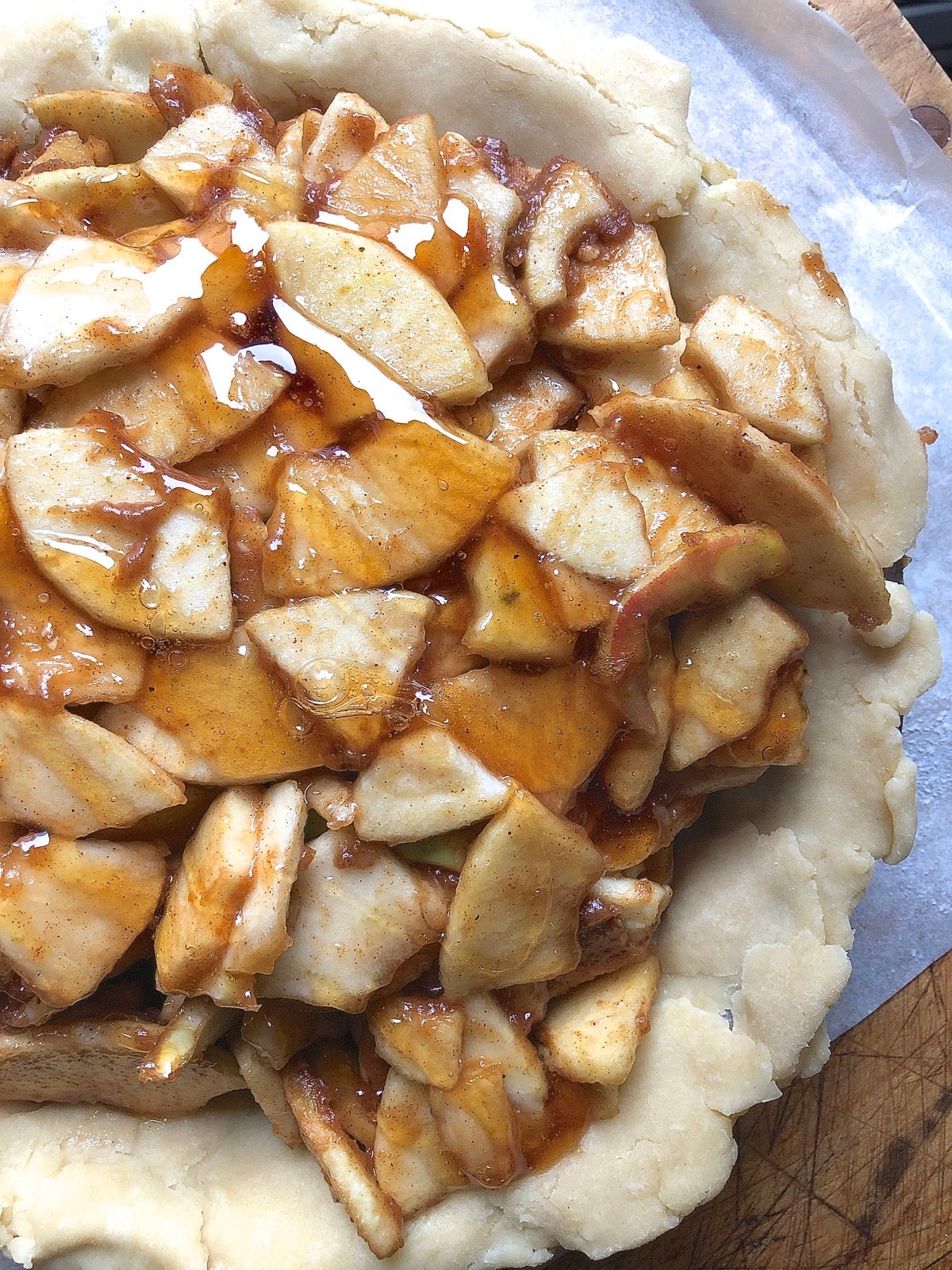
Once you’ve combined the apples with the remaining filling ingredients and spooned them into the crust, drizzle this syrupy juice over the apples.
The result? Less juice to collect in the bottom of the crust; concentrated apple flavor.
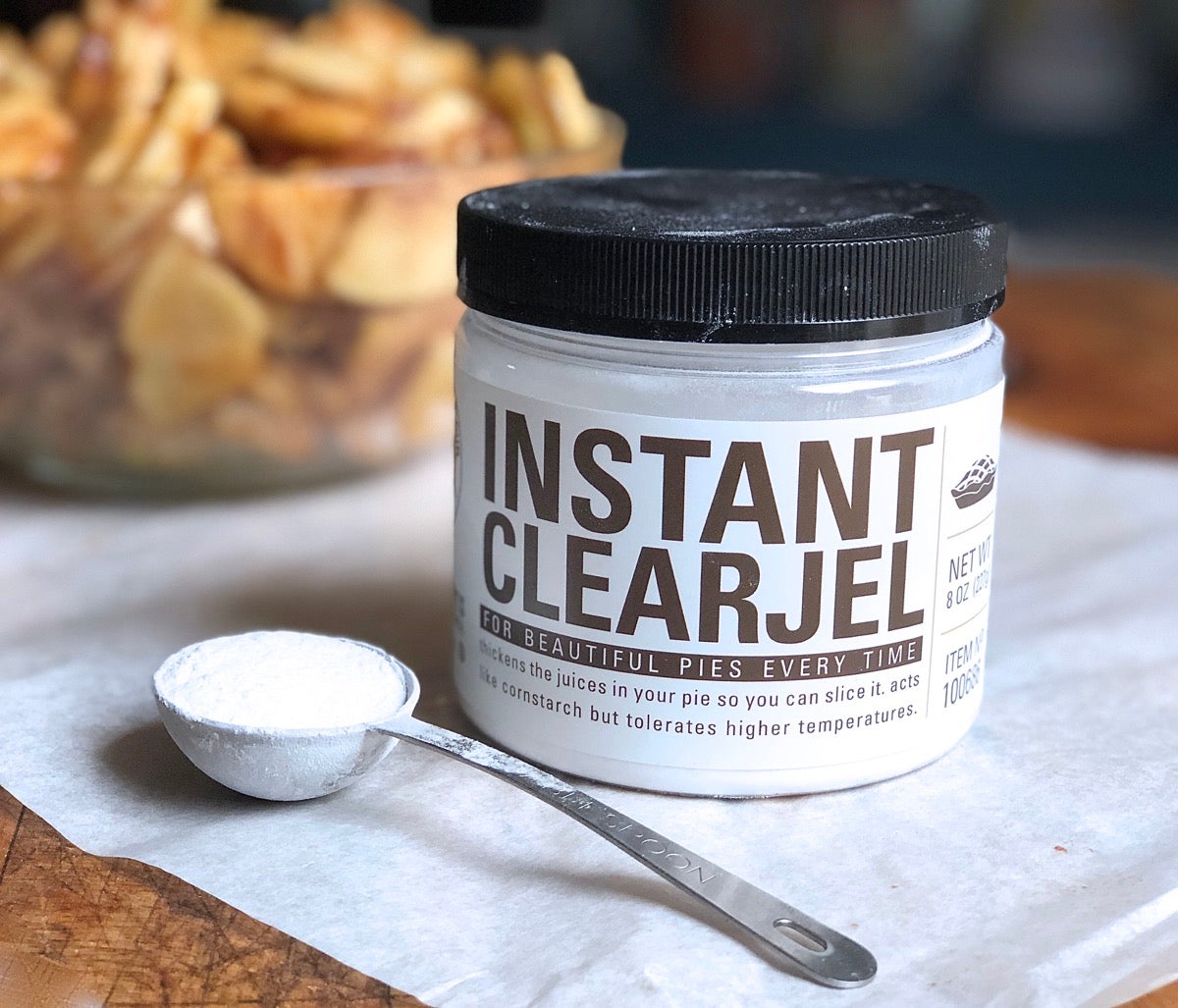
If you usually use flour to thicken your apple pie and it's not doing the job, try something different: cornstarch, tapioca, and arrowroot are other established fruit pie thickeners. For more on specific thickeners and how to use them, see our Pie Filling Thickeners Guide.
Here in the King Arthur Test Kitchen, we swear by Instant ClearJel (and its sibling, Pie Filling Enhancer). With more thickening power than flour, this modified cornstarch is similar to standard cornstarch but yields fruit filling with a softer feel, and without the gummy texture you can sometimes get from regular cornstarch.
But don't take it from us. Here's what one of our readers says: "I used this for the first time in an apple pie. I was so pleased with the results. The pie holds its shape when cut and tastes great. I also think that my bottom crust stayed flakier..." Sandy, Pennsylvania
ClearJel also makes fruit filling that’s freezer-safe, unlike fillings made with other thickeners, which can break down and become watery if frozen and then thawed.
One cautionary note: It's best to mix ClearJel with some of the sugar in your recipe before adding it to the apples, to prevent the ClearJel from clumping. So if you're going to "reduce the juice" (above), save about 1/4 cup of the sugar to add to the ClearJel.
Again, if you’re perfectly satisfied with your current recipe using flour, cornstarch, or tapioca to thicken filling and prevent runny apple pie, great! Stick with it. But if you’re not 100% sold, try Instant ClearJel.
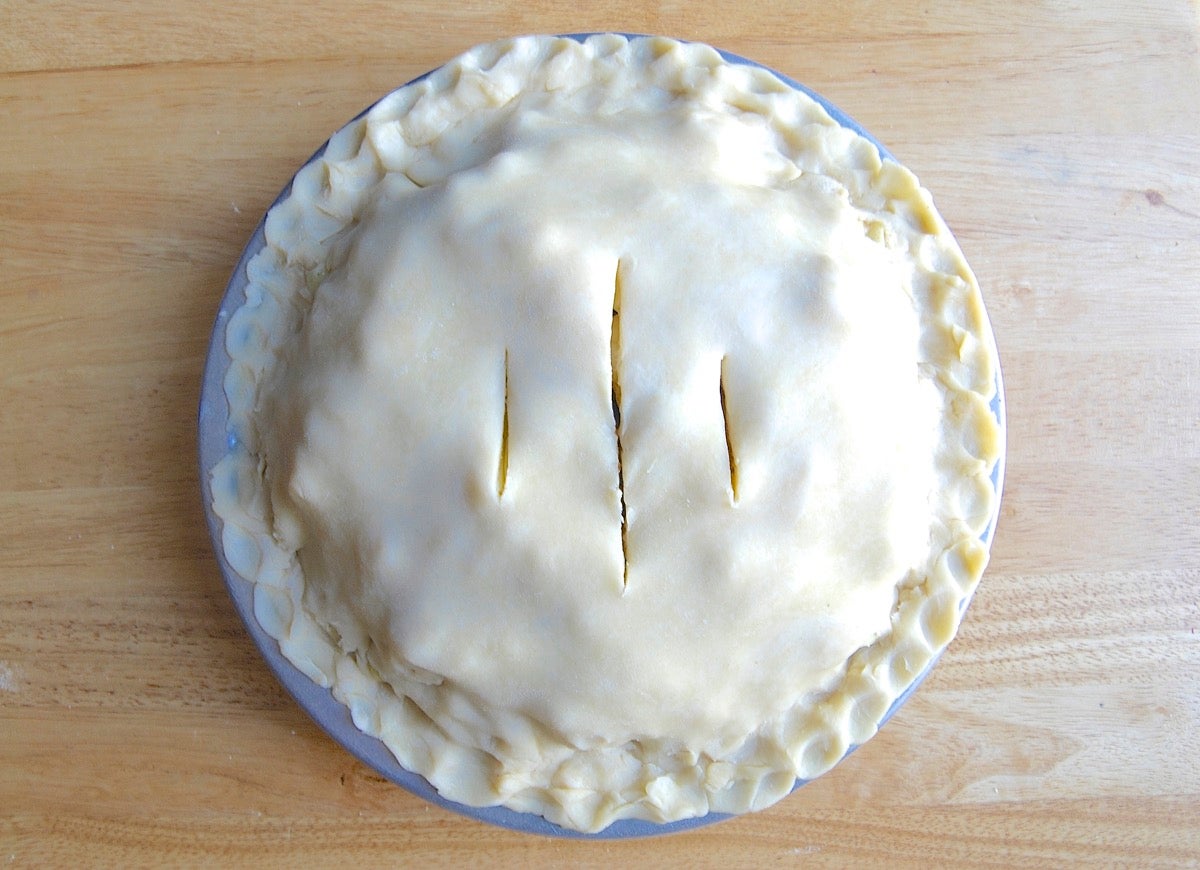
Why mar your pristine top crust by cutting holes in it? Because steam from the baking apples needs to escape, lest it collect under the crust and create (you guessed it) soupy filling.
Make sure the vents you cut are sufficiently deep and long to allow steam to escape easily. A random scattering of pinpricks with a fork isn’t going to do it!
For best results, make a series of slashes, or cut a 1" round hole in the center of the crust. Releasing steam not only helps thicken the filling, it encourages the crust to become crisp and flaky rather than waterlogged.
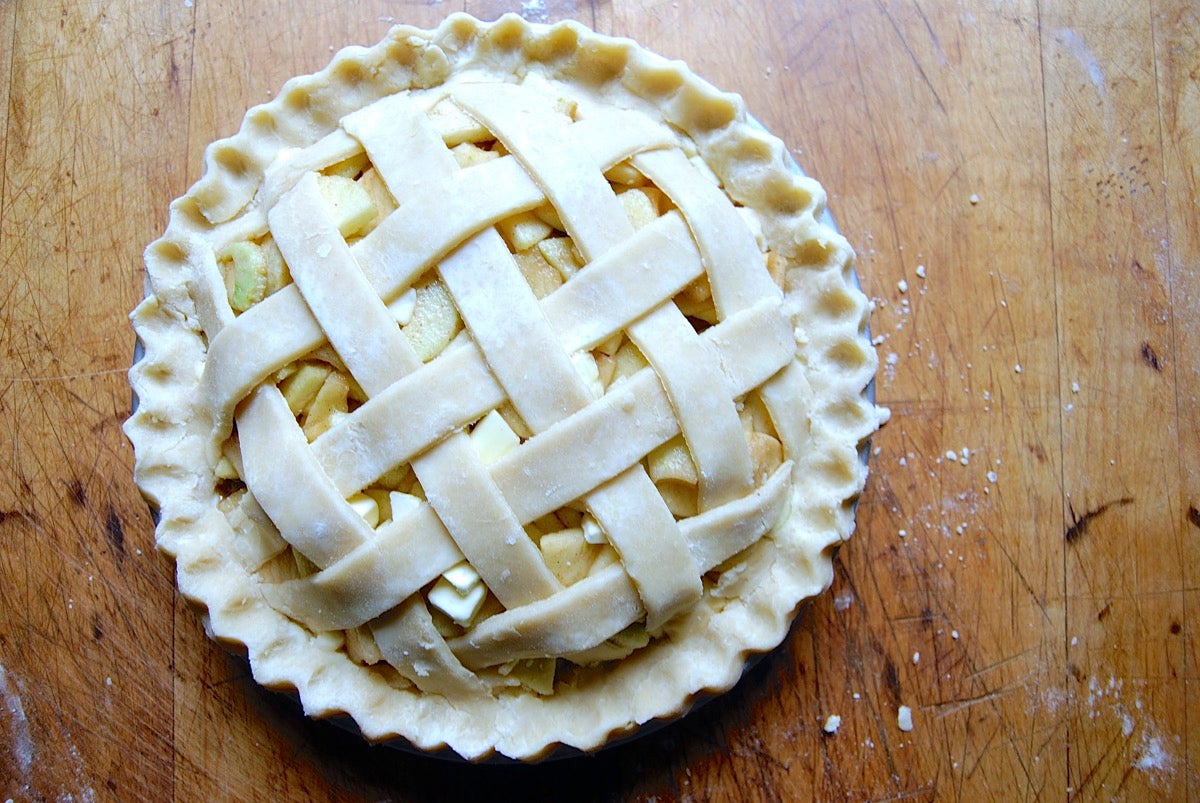
Venting helps release steam in a solid-top crust. But if you're not wed to a traditional solid-top apple pie, weave a lattice crust. Even if you place them very close together, those woven strips of pastry offer plenty of ventilation.
Never tried a lattice crust? See how it's done: How to weave a lattice pie crust.
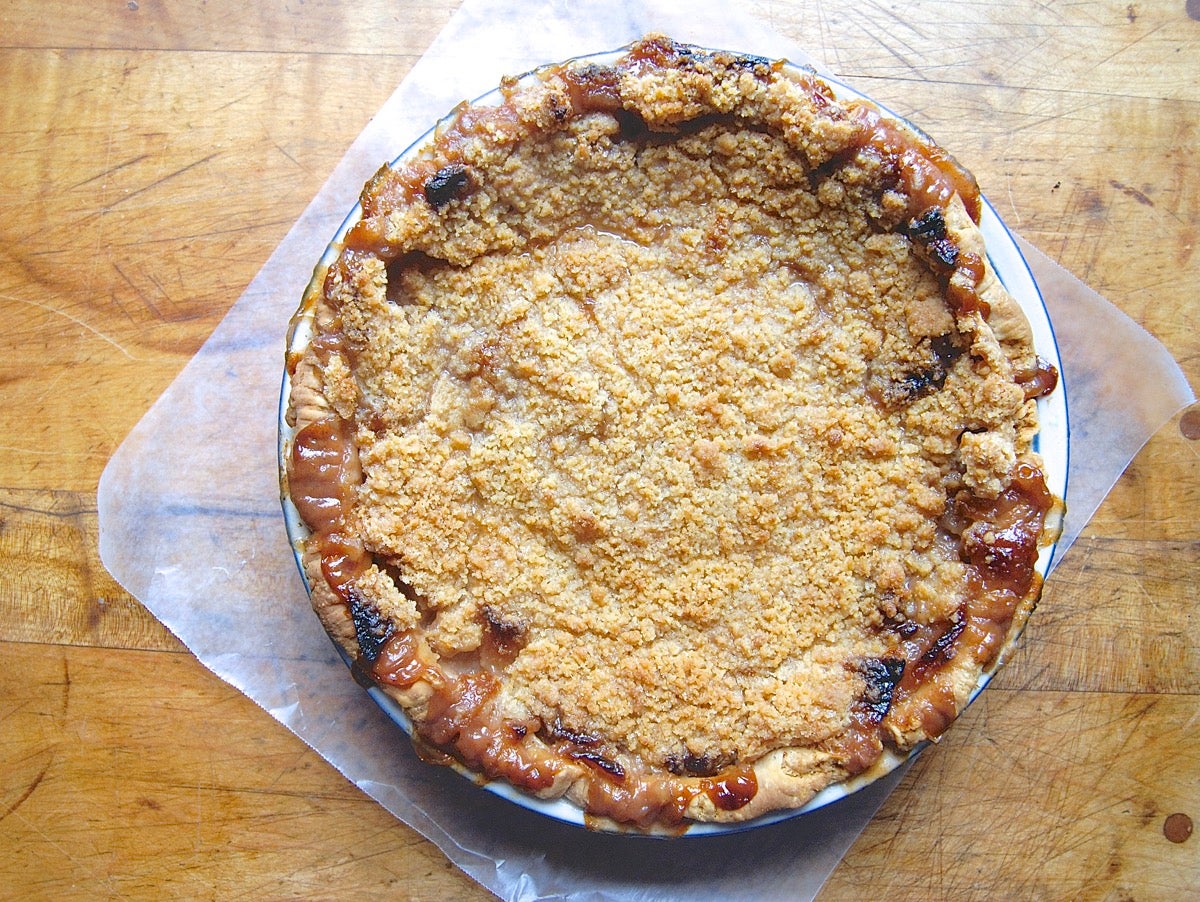
Even easier, make a “Dutch” apple pie: a single-crust apple pie topped not with pastry but with streusel, a crumbly mixture of butter, flour, sugar, and often oats and/or nuts.
Both a lattice crust and streusel topping are obviously much more effective than a solid-top crust (even when it's vented) at releasing steam quickly and effectively, helping prevent a runny pie.
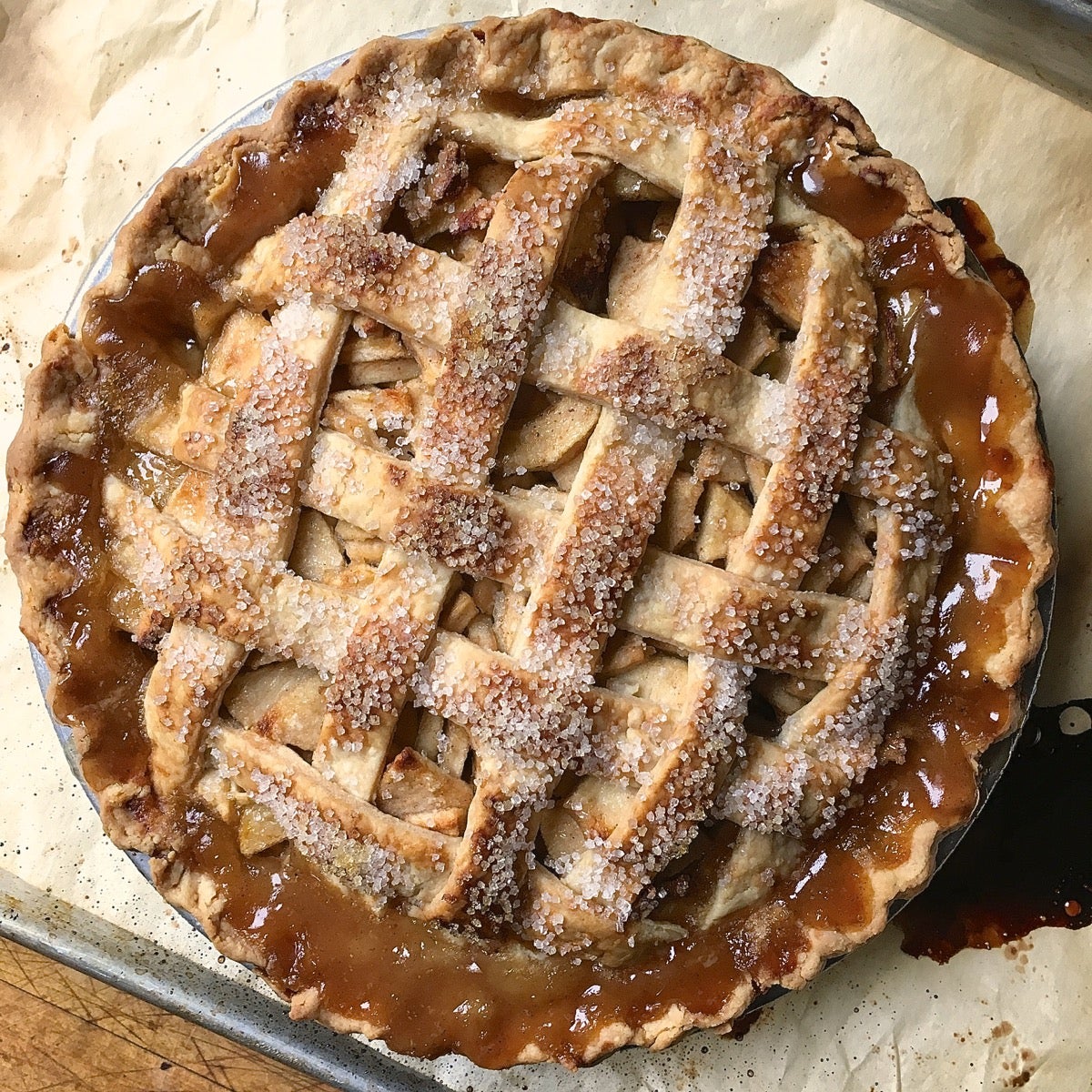
One of the chief reasons bakers end up with apple soup under the crust is failure to bake their pie long enough.
There’s almost no such thing as over-baking an apple pie; I’ve baked apple pies for 2 hours and longer, and they turn out just fine. But if you underbake your pie, not only will the apples potentially be crunchy and the crust wan and flabby; the combination of heat, liquid, and thickener won’t have sufficient time to work.
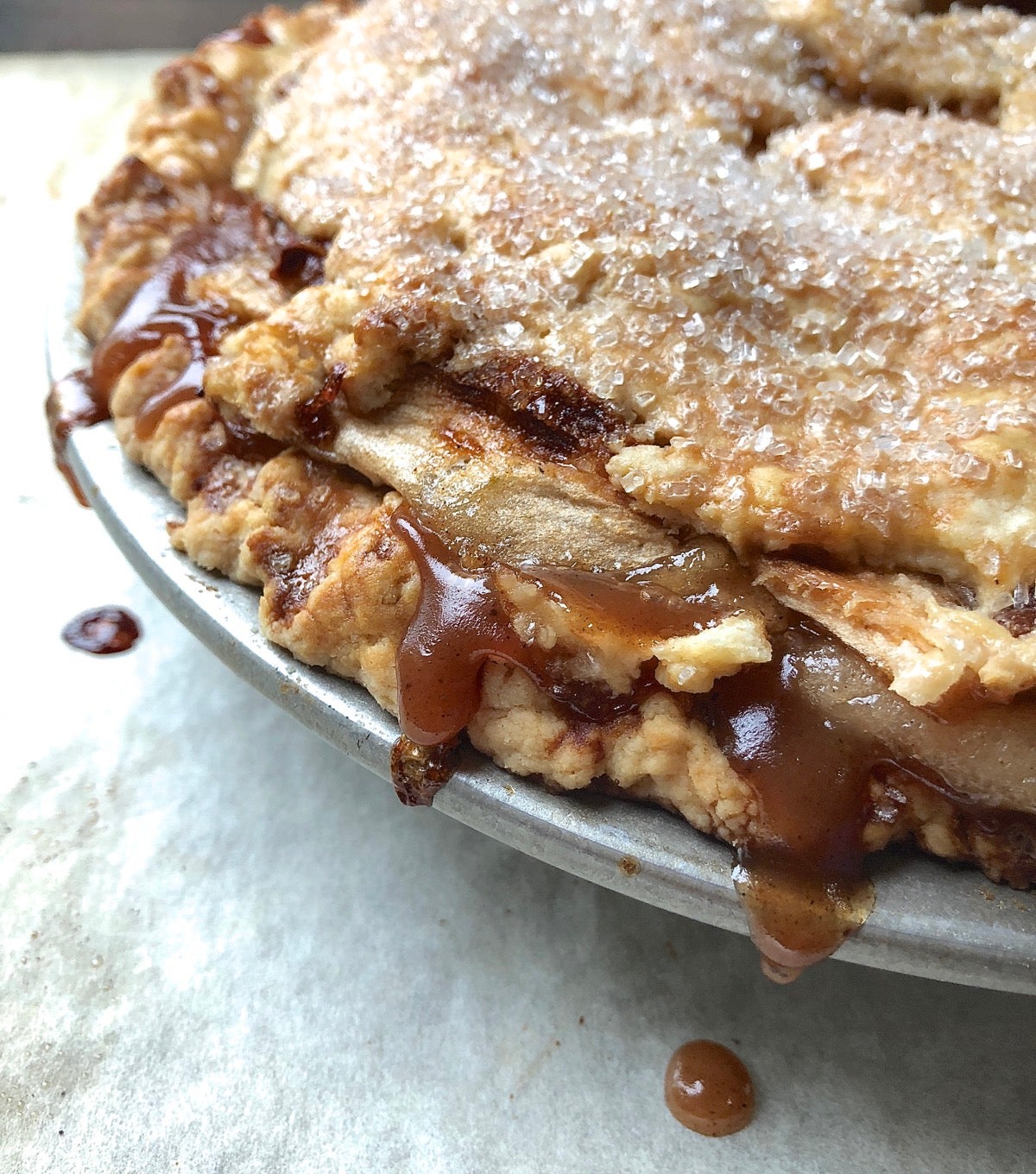
When apple pie bakes, the apples exude juice. At some point, that juice starts to boil, which releases excess moisture in the form of steam. In addition, the starch in the thickener absorbs some of the water in the juice, making the remaining juice highly flavorful and dense enough to hold the apples in place.
For best results, bake your apple pie for at least 10 more minutes after you see juice actively bubbling out the vents (or edges) in the top crust. Note: Baking your pie on a parchment-lined baking sheet (to catch any filling overflow) helps you avoid a smoking mess on the oven floor.
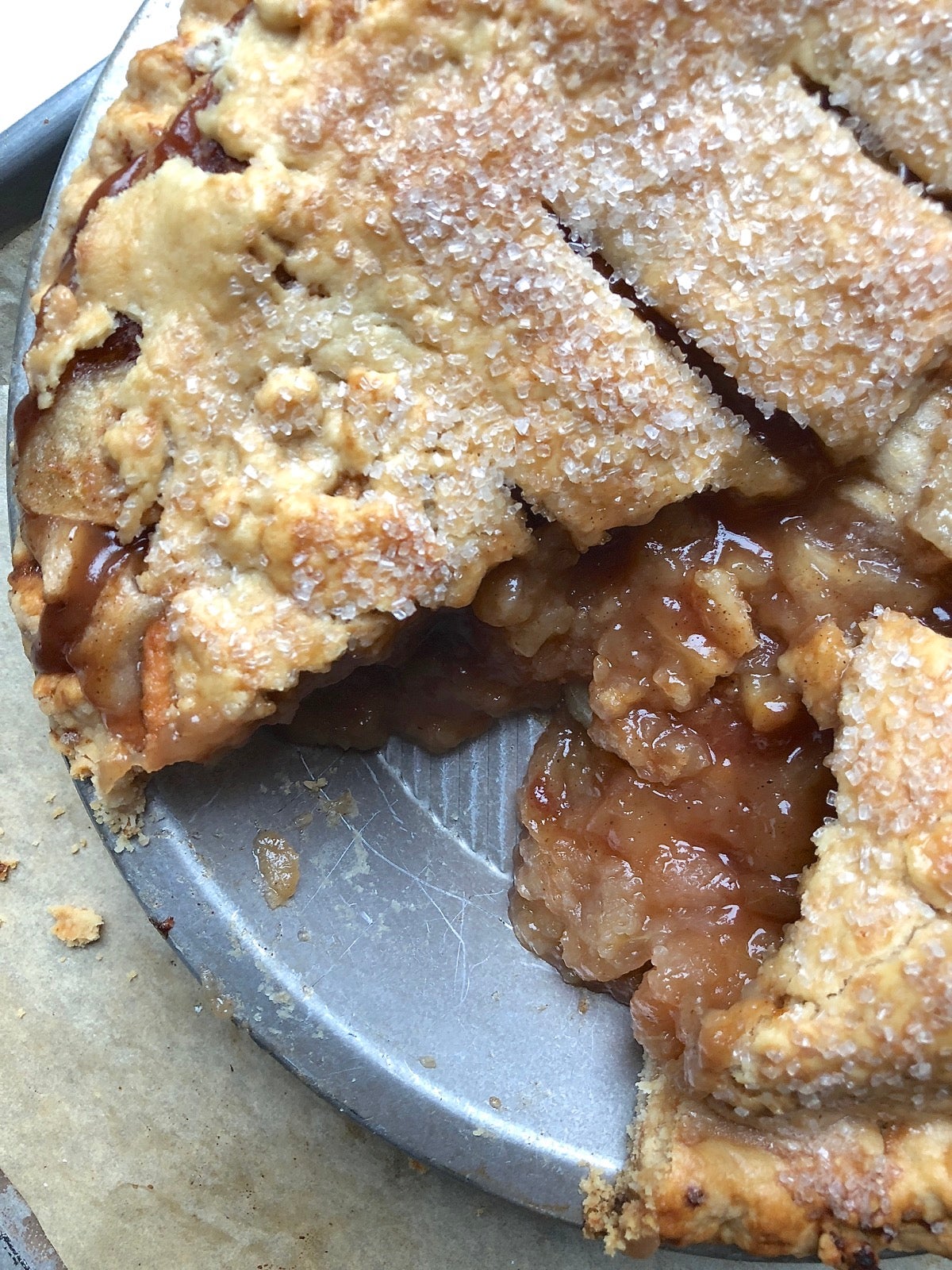
Even a perfectly thickened pie may show signs of excess juiciness when cut directly out of the oven. As the pie cools, its filling will solidify. It takes time for pie to cool thoroughly and its filling to thicken completely, so control your appetite and let it rest for several hours.
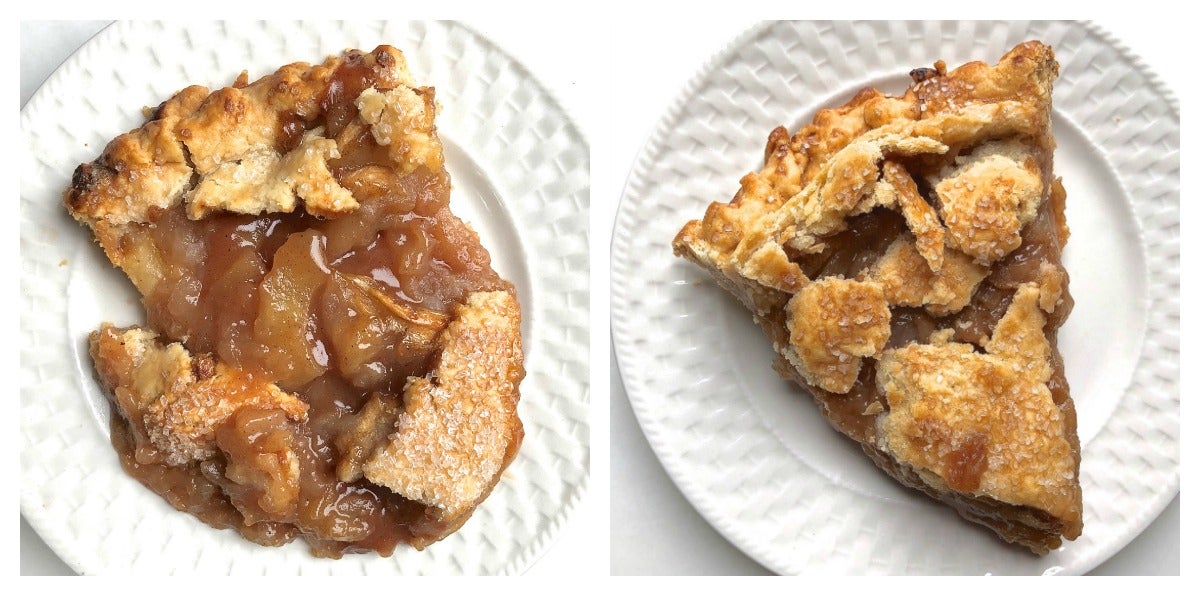
Better yet, let the pie rest all day (or overnight) at room temperature; this will further solidify the filling, as well as melding its flavors. If you want to serve the pie hot, reheat individual slices very briefly in the microwave — just enough to warm the filling but not enough to toughen the crust.
I know from past experience that apple pie is a subject dear to the hearts of many of you. Want to stand up for your favorite apple pie filling thickener? How about your favorite apples? Please share your opinions in comments, below.